A trip to the heritage and travel of Yemen
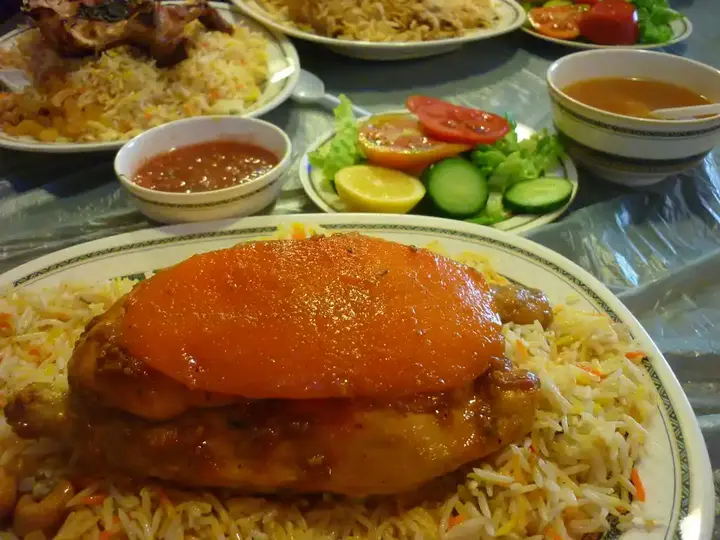
In the south of the Arabian Peninsula, Yemenis inherit a rich food heritage that reflects the history and culture of this country. Yemen's traditional food is diverse and rich in unique flavors that reflect a long history of trade and tradition. Food in Yemen is not just food, it is part of Yemeni culture and heritage, where people gather around it to share stories and experiences and celebrate the rich heritage of this charming country.
Show key points
- Yemeni traditional cuisine reflects the country's rich cultural and historical heritage, shaped over thousands of years by various influences.
- Arab, Indian, African, and especially Islamic cultures have significantly shaped Yemeni food through trade, conquest, and religious exchanges.
- The Islamic conquest introduced new dietary norms, spices, and dishes to Yemen, making a lasting impact on the country's culinary identity.
- ADVERTISEMENT
- Essential ingredients in Yemeni cuisine include meats, grains, legumes, and a wide array of spices, with cinnamon, cardamom, and saffron playing prominent roles.
- Geography and climate have influenced regional dishes, with coastal areas favoring seafood and mountainous regions relying on hearty, protein-rich foods.
- Popular meals like Mandi, Kabsa, and Salta are not only staples in Yemeni homes but also symbols of cultural identity and communal gatherings.
- Through migration and globalization, Yemeni traditional foods have reached international audiences, promoting cultural exchange and tourism.
History of traditional food in Yemen
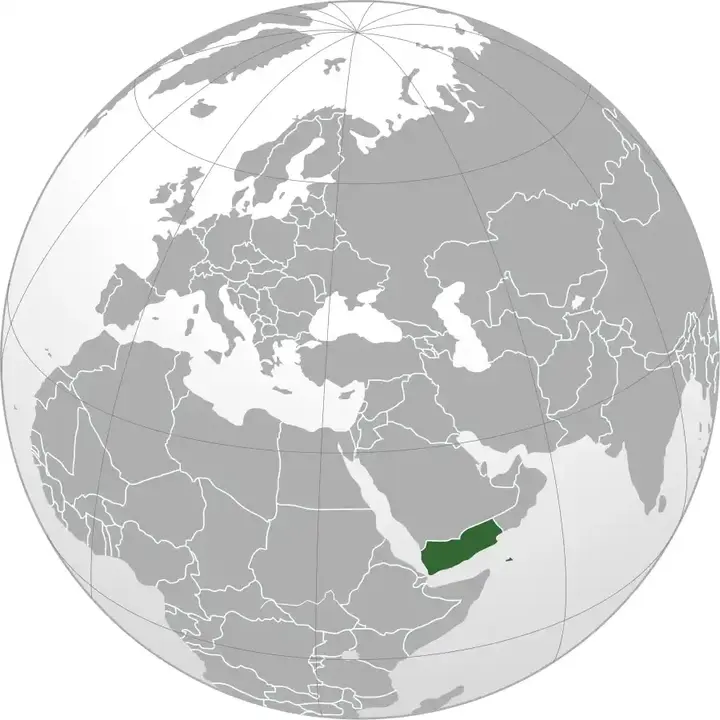
Yemeni folk food reflects a long history of cultural exchange and mutual influences with several cultures and countries. Here are some influential aspects and how they reached and influenced the Yemeni heritage:
Recommend
Arab influence: Yemeni folk food has its roots in ancient times, where Arab traditions have had a great influence on Yemeni cuisine, whether in the use of spices such as saffron, cinnamon and ginger or cooking methods.
Islamic influence: With the spread of Islam in the Arabian Peninsula and the rest of the region, new eating habits came with religion and the impact of the Islamic conquest had a profound impact on the heritage of Yemeni popular cuisine, which we will discuss at length later.
Indian influence: Throughout history, there has been trade exchange between Yemen and India, and this contact has led to the transfer of some recipes and spices between the two countries. For example, the influence of Indian spices such as curry and cumin can be seen in some Yemeni dishes.
African influence: Due to Yemen's geographical location close to the African continent, there has been an influence from African cultures on Yemeni folk food, which has led to the use of some common ingredients and spices in Yemeni dishes.
The history of popular foods in Yemen extends back thousands of years, as these foods were formed as a result of multiple influences from history, heritage and culture, making popular foods an integral part of Yemeni identity and culture.
The Widespread Influence of the Islamic Conquest on Popular Food in Yemen

Yemeni cuisine was greatly influenced by the Islamic conquest, as this period brought cultural, economic and religious changes to Yemen. Here are some examples of the influence of the Islamic conquest on Yemeni popular cuisine:
Nutritional composition: The nutritional composition of Yemeni folk cuisine was influenced by the conquest of Islam, where the main food usually consisted of meat, such as lamb and cattle, mixed with rice, bread, and seasonal vegetables. This reflects the Islamic influence that brought new dietary patterns to the region and influenced the country's heritage.
Spices and food traditions: Yemen's food traditions were influenced by a variety of spices and techniques imported during the Islamic period, including cardamom, saffron, cloves and cumin. This spice has been widely used in Yemeni cuisine to enhance flavors and add depth to dishes.
Cooking style and new dishes: Since the Islamic conquest, new dishes have appeared in Yemeni popular cuisine, such as mandi, samosas and meat stuffed with rice. These dishes reflected the new heritage and cuisine introduced to the region through trade and cultural exchange with other Muslim countries.
The impact of religious rituals and customs: Dietary customs in Yemen have also been influenced by Islamic religious rituals and customs, such as the month of Ramadan, Eid, and other religious occasions that include food and drink traditions.
In this way, the Islamic conquest brought important changes to Yemeni cuisine, and constituted a tangible impact on the heritage, dishes and food traditions we know today.
A funny story about the impact of the spread of Yemeni popular coffee shops

Yemen was one of the first countries to invent popular shops specialized only in coffee when coffee arrived from Abyssinia in the fourteenth century AD and when the Turks tried to imitate these shops in the Ottoman Empire when they liked the idea and the news of these stores reached the Topkapi Palace in the era of Sultan Suleiman the Magnificent One of the ladies in the Ottoman court was able to convince the Sultan to deprive this drink because it caused a strange sense of sudden awakening, which is strange to their culture at the time, and indeed issued A decree in 1543 AD ordering the prohibition and closure of these shops, which was also done by his son, Sultan Selim II later!!
The main ingredients in traditional food in Yemen

Yemeni traditional food consists of a set of basic ingredients that carry with them a rich history and heritage.
The main ingredients of popular food in Yemen include grilled meats cooked in various styles, such as meat, chicken and fish, which represent an important part of the daily food of Yemenis. The main ingredients also include rice, wheat, barley and legumes, which are used to prepare a variety of dishes loved in Yemen. Spices are also an integral part of Yemen's food heritage and culture, with a rich history that reflects the country's diversity and heritage. Reflecting a rich diversity and centuries-old history, cinnamon is widely used in both sweet and savoury dishes, and adds a warm and distinctive flavor to food. Cardamom, which is an essential ingredient in the preparation of Yemeni coffee, and saffron, which is used to color and improve the taste of popular foods. This spice is an important part of Yemen's food heritage, as it has been used since ancient times to prepare foods and add flavor to dishes. Reflecting the country's rich history and culture, these spices are an essential part of Yemen's food identity, as they maintain their prominent place in popular cuisine and continue to enrich traditional and contemporary culinary experiences alike.
Effects of natural factors such as climate and terrain on popular dishes in Yemen
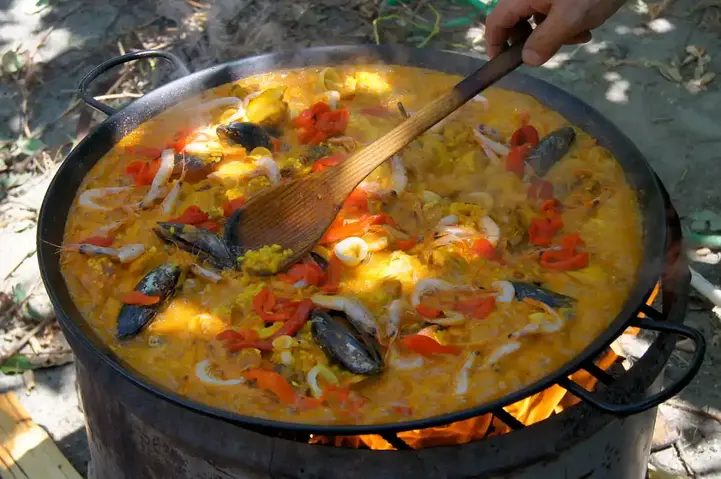
Natural factors such as climate and terrain are among the most prominent factors influencing the formation of popular dishes in Yemen, and these influences are closely linked to the country's heritage, history and food culture.
Yemen's climate is diverse, ranging from cold mountainous areas to hot coastal areas. This diversity of climate leads to a diversity of available agricultural crops, which directly affects the availability of basic nutritional components of popular food.
For example, in colder mountainous regions, food is famous for fatty and protein-rich ingredients such as meat, rice and barley, while in coastal areas it features marine ingredients such as fish and seafood.
On the other hand, geographical terrain plays an important role in shaping popular dishes in Yemen. For example, Lamqa Amriya and spaghetti are popular foods in mountainous areas, where soft Arabic bread, a type of bread produced mainly in those areas, is used in its preparation.
Diversity of popular Yemeni meals
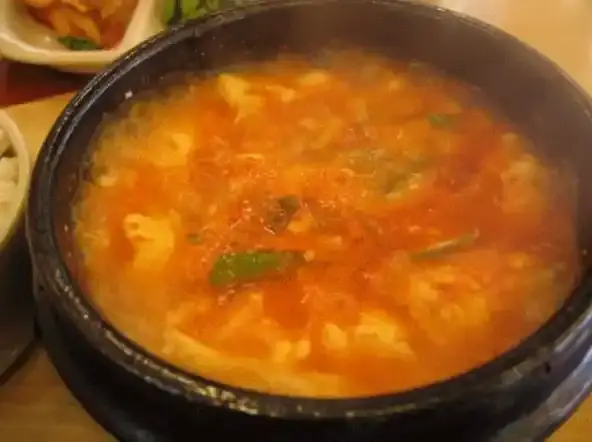
Popular meals in Yemen are characterized by their rich diversity that reflects the country's heritage, culture and ancient history. A variety of delicious dishes can be found in Yemeni cuisines, among these dishes are:
Mandi is a traditional Hadrami dish from the heritage of the city of Hadramout and it is an authentic part of the ancient history of Yemen and it is a dish that reflects all the main ingredients of Yemeni food it consists of meat or chicken that is seasoned with authentic Yemeni Arabic spices such as pepper, cardamom and cinnamon with rice and is placed in special ovens similar to tandoor and with steam and grilling consists of meat juicer that mixes with rice and spices and this meal is served at banquets and big occasions
Kabsa is a popular meal consisting of chicken or meat meat with rice and assorted vegetables, cooked with distinctive local spices that give it a wonderful flavor.
Also, like the basket, which is undisputed the first popular food in the Yemeni heritage, its main ingredients are lamb or chicken with rice and potatoes, fenugreek ground with leeks and coriander.
These examples show how diverse popular meals are in Yemen and express the country's rich heritage, culture, food and history. These meals are an essential part of the Yemeni dining experience and are considered a hub for social interaction and family traditions.
The role of popular food in Yemen in attracting tourists and promoting cultural tourism in Yemen
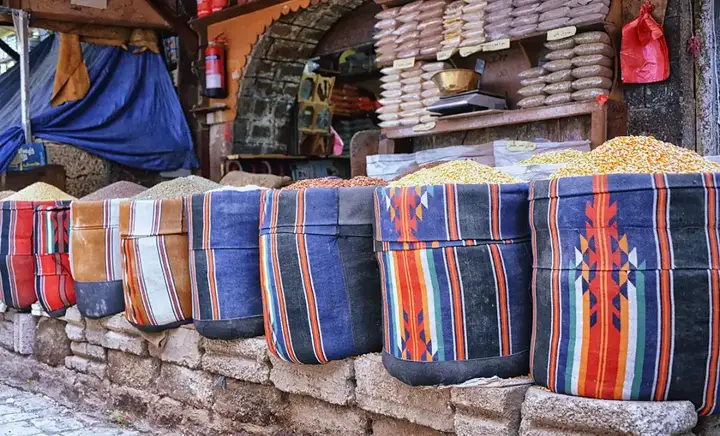
Popular foods in Yemen are a key factor in attracting tourists and promoting cultural tourism in the country, as these foods reflect Yemen's ancient history and heritage and cultural identity. It provides an opportunity for tourists to explore and interact with Yemeni culture, and promotes mutual understanding between cultures. The following examples illustrate the role of popular foods to this end:
Cultural communication: Tasting Yemeni folk foods is part of the tourist's cultural experience, through which they learn about the customs and heritage of people in Yemen and interact with them directly.
Historical exploration: Yemen's popular foods carry a long history of trade and cultural exchange, giving tourists the opportunity to understand the evolution of the country's food culture through the ages.
Promoting diversity: Popular foods in Yemen are characterized by their great diversity and the variety of ingredients used in their preparation, which attracts tourists who want to explore new cultures and foods.
The impact of migration and globalization on the spread and exchange of Yemeni traditional foods
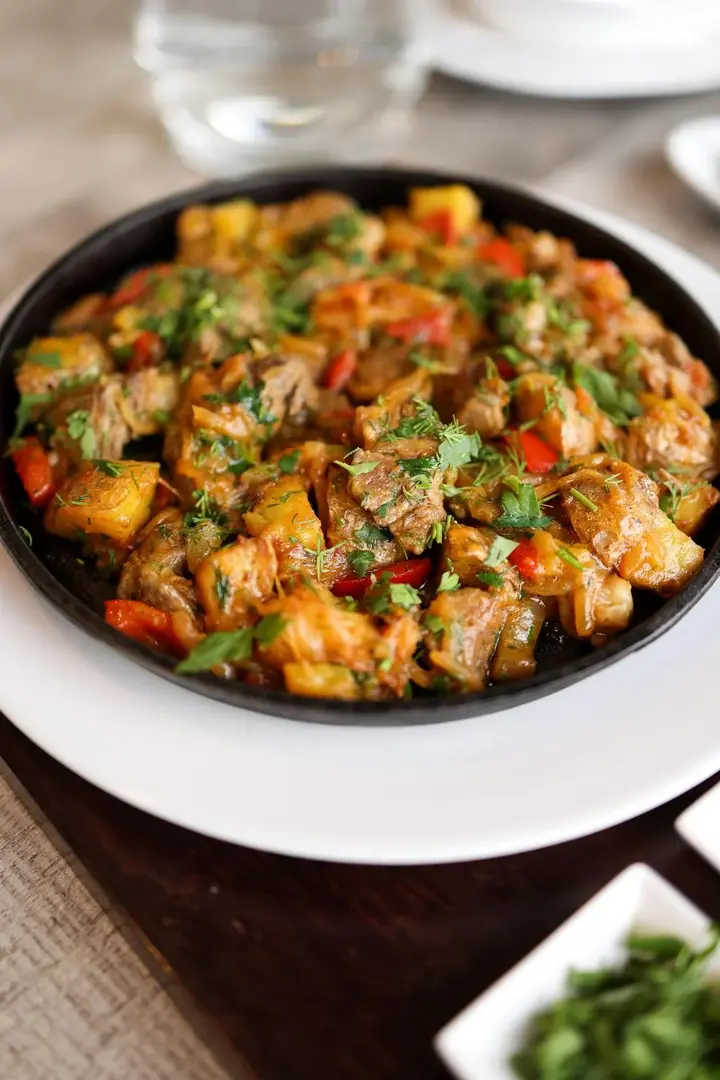
With the increasing Yemeni migration to other countries around the world and thanks to globalization, their food and recipes are being transferred to new communities where they are adopted and integrated into their kitchens. This cultural transfer of Yemeni folk foods contributes to preserving the food heritage and promoting Yemeni culture in the world
For example, in the United States, Ben Magellan in Detroit, Michigan, is a hub for Yemeni cuisine. The restaurant serves authentic traditional Yemeni meals such as Mandi, Kabsa, Salta and Yemeni tea. In addition, Al Amir Restaurant in London is renowned for serving popular Yemeni food. The restaurant serves a variety of traditional Yemeni dishes such as Hilla, prawns, fattah and basbousa, allowing customers to try these foods and discover the Yemeni culinary culture without having to travel to Yemen.








